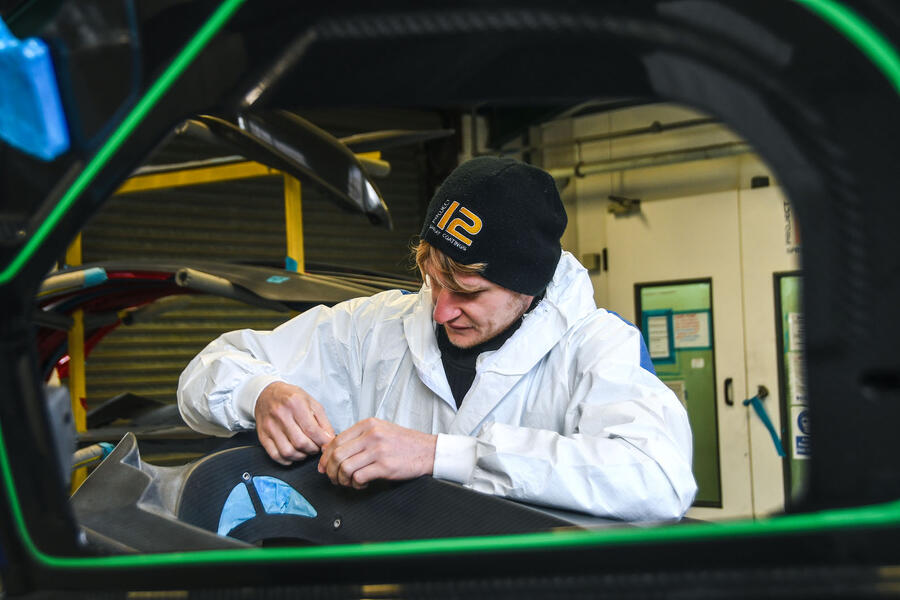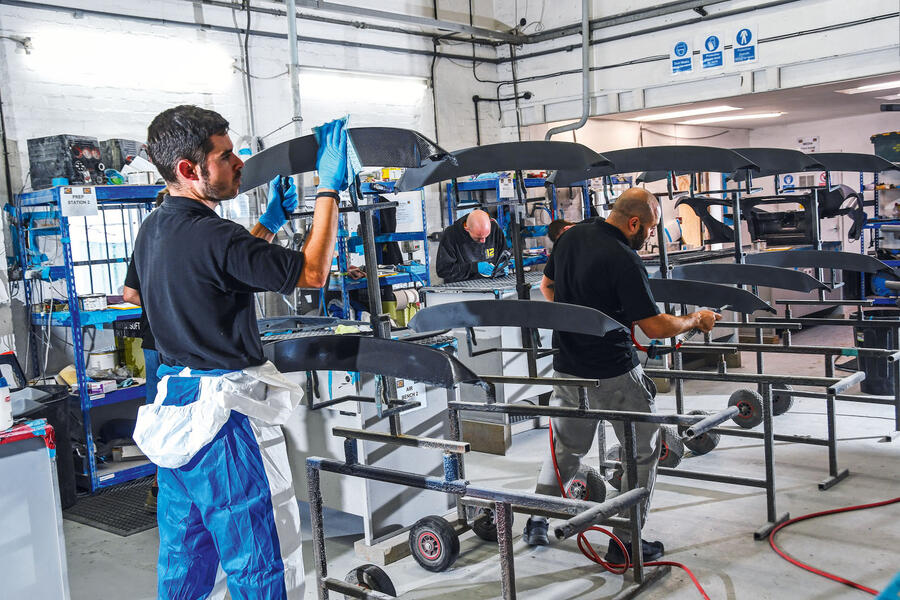“We weren’t there yet, though,” says King. “Some of the larger components were still at risk of damage.” The high-pressure jet was too concentrated and King figured out that although his new abrasive media was right, the process was wrong. “It was frustrating,” he continues. “I’d been wasting money trying to find the holy grail of carbonfibre finishing for 10 years. Then I had another light-bulb moment.” What was needed, he reasoned, was a large blast nozzle that delivered a high volume of media while giving the control of a conventional, smaller nozzle. Again, King worked with a blast machine manufacturer to develop bespoke dry-blasting kit and eventually he’d cracked it.
The lacquer finish is applied like any other automotive paint in a spray booth, starting with a clear primer which is then carefully sanded by Project 12’s skilled staff. Once the topcoat of clear lacquer is applied, it’s hand polished and inspected by the quality control team, who King jokingly refers to as the “Profit Prevention Department”, because they can spot the slightest imperfection.

Finishes can be clear gloss or satin, and they also act as an ultraviolet filter to prevent the yellowing that normally afflicts carbonfibre over time. Satin is the most challenging because imperfections cannot be polished out, so the finish must be perfect straight from the spray gun. Both gloss and satin finishes can be colour-tinted, producing a subtle but far more vibrant result compared with the traditional method of tinting the resin itself.
King hasn’t finished yet and is developing a new process to apply gold leaf below the lacquer, but after 15 years, several hundred thousand pounds spent and approval for his processes by the National Composite Centre, he has achieved his main goal. With his crack team behind him, he’s now the go-to guy for stunning carbonfibre finishes.
The visual carbon process – step by step
1. Silicone-based release agent used when the carbonfibre component is moulded is cleaned from the surface of the carbonfibre using Project 12’s specially developed chemical cleaner and degreaser.
2. The surface of the carbonfibre is mechanically keyed with a bespoke dry-blasting process, creating a matt finish to which the lacquer will adhere.
3. A clear primer is applied to the surface and sanded to a fine finish. Complex surface details which can’t be safely sanded are spot-blasted to key the surface ready for the topcoat.
